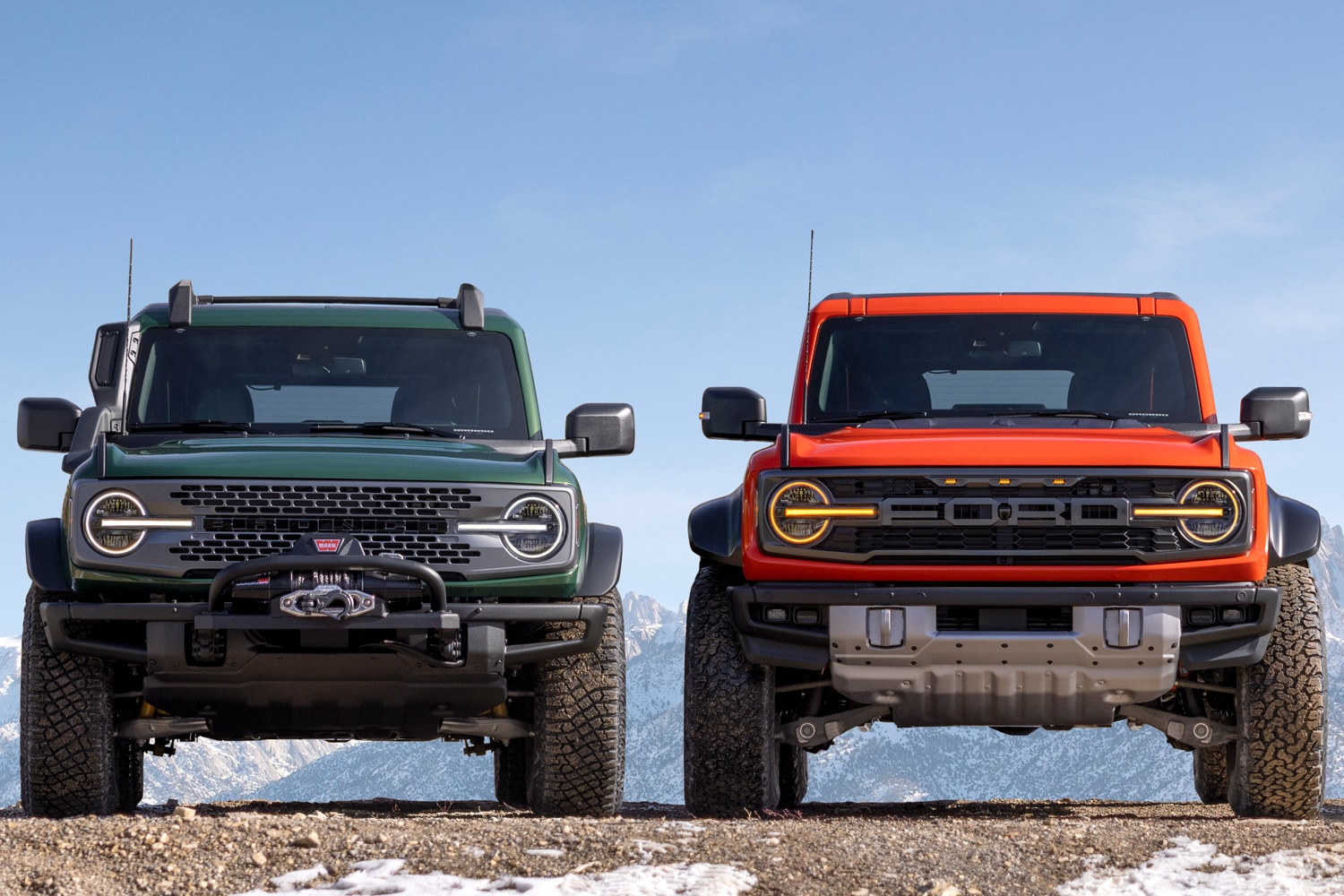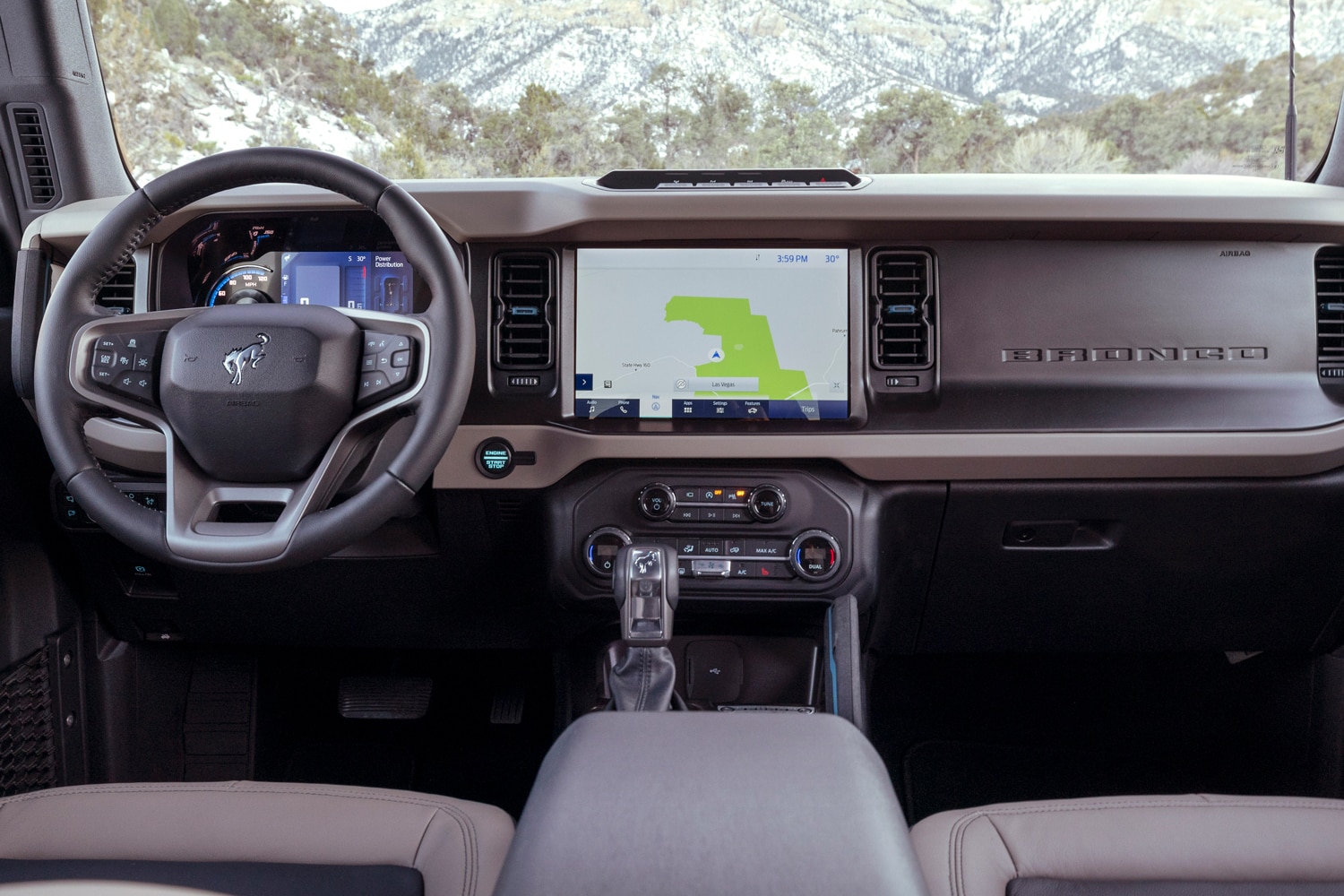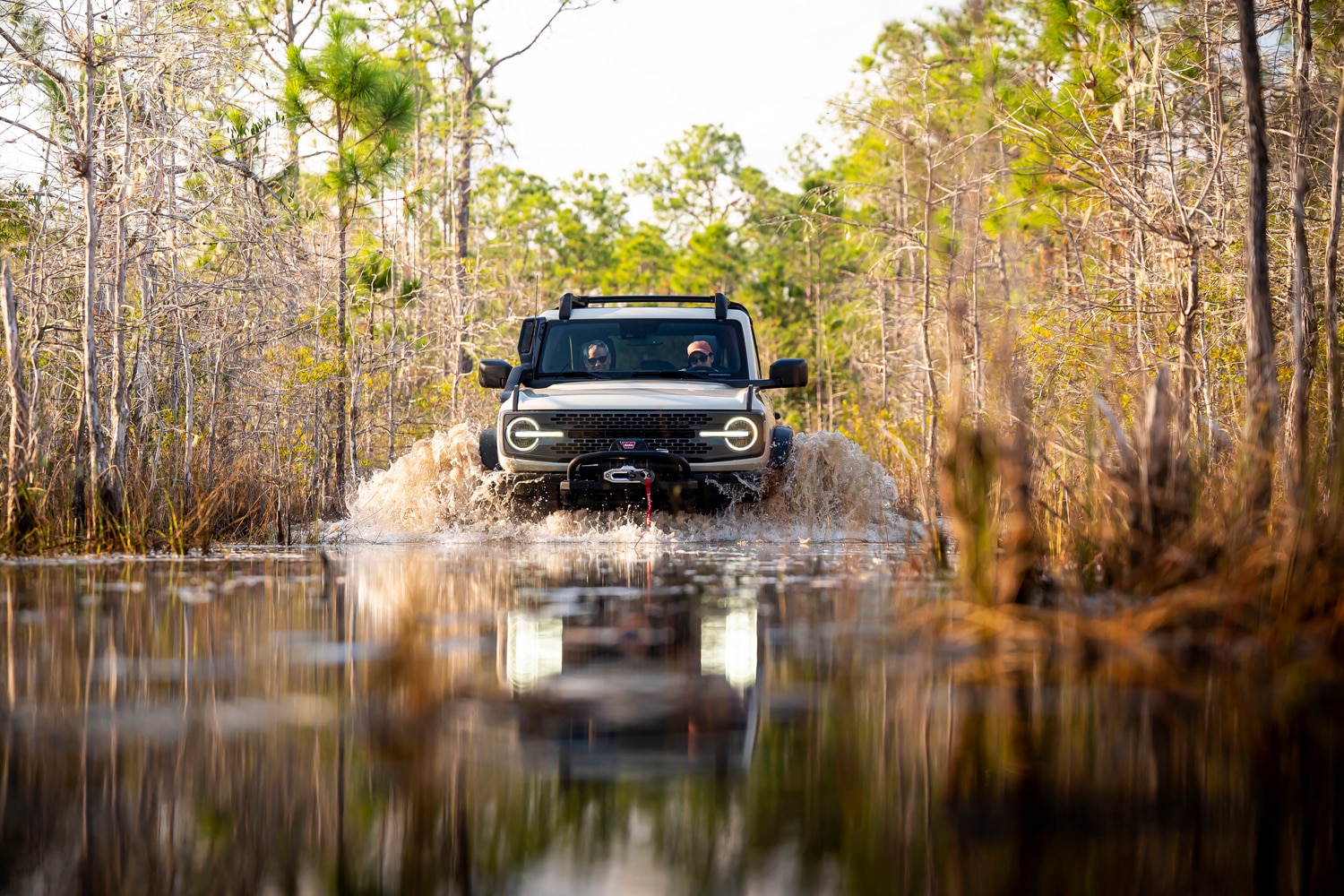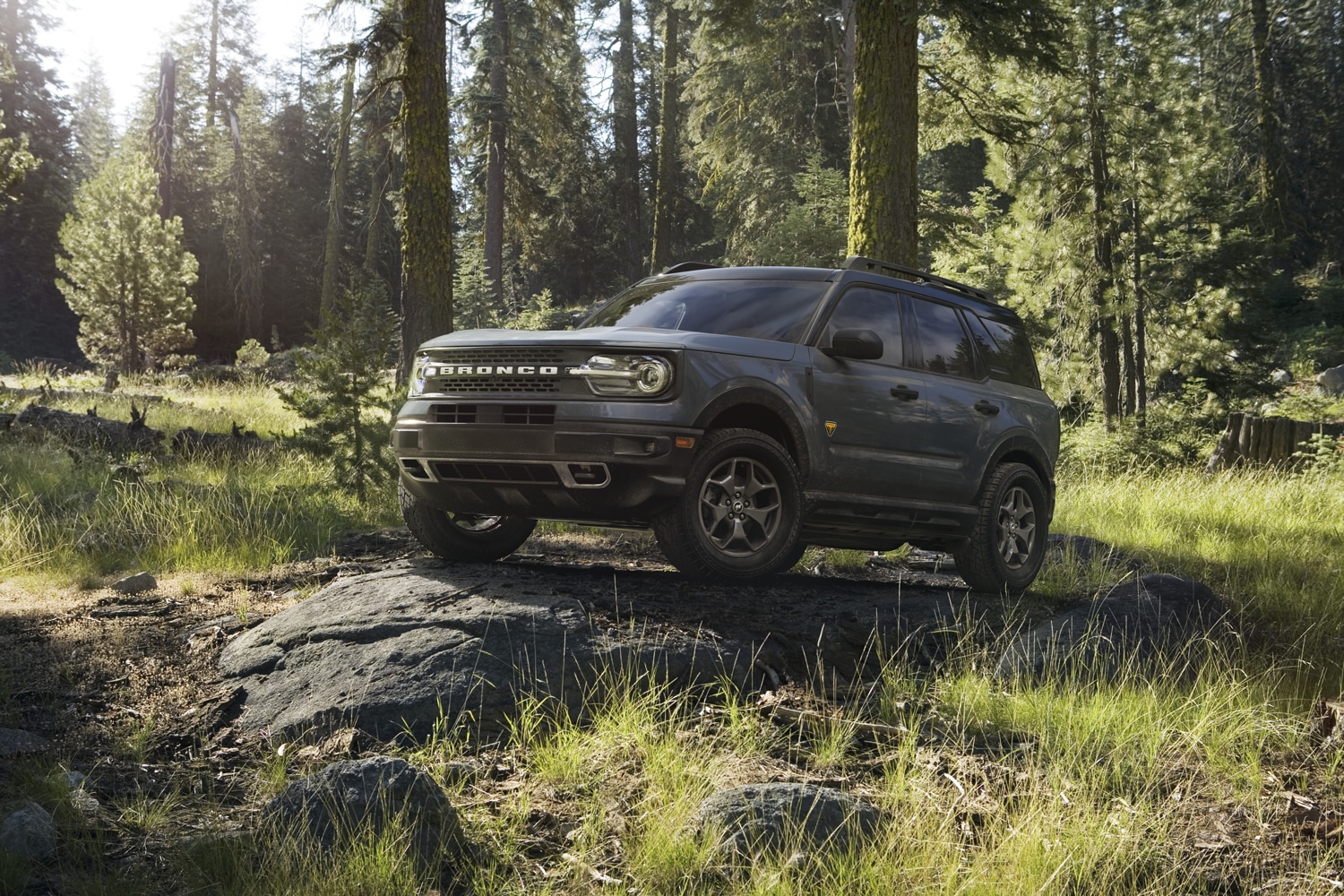Compared: 2022 Ford Bronco vs. 2022 Ford Bronco Sport
One of these SUVs is for the extreme set. The other is for normal people who like to go day hiking.
 Ford
Ford
Article QuickTakes
They share an equine name spelled across the grille in wide capital letters and a bucking horse graphic on the steering wheel. Otherwise, the Ford Bronco midsize SUV and Ford Bronco Sport compact crossover are nothing alike in purpose, performance, and price. If you’re wondering which is right for you, here are some of the key differences.
 Ford Bronco
Ford Bronco
Ford Bronco vs Ford Bronco Sport: Price
Naturally, the smaller Bronco Sport is the more affordable SUV. The boxy trucklet starts around $30,000 and spans four trims for 2022, all of which have all-wheel drive and an eight-speed automatic transmission. Three come with a 181-hp three-cylinder with enough power for casual use, but the top Badlands model has a 250-hp four-cylinder that feels legitimately quick. Fully loaded, you’re looking at more than $43,000.
 Ford Bronco Sport
Ford Bronco Sport
The big Bronco comes in eight trims for 2022 in either a two- or four-door body style with a fabric or molded-plastic removable roof. For about $32,000, you can get a two-door version on steel wheels with a 300-hp, turbocharged four-cylinder and a seven-speed manual transmission (a ten-speed automatic is optional). The same spec, but with four-doors starts just above $36,000. A 330-hp, turbocharged V6 is an $1,895 option on five trims and standard on the Wildtrak, which starts around $51,000. The Everglades is one step higher than the Wildtrak and comes only with the turbo four. The Bronco Raptor is a special animal—it offers a twin-turbo, 3.0-liter V6 with at least 400 horsepower and costs about $70,000.
 Ford Bronco
Ford Bronco
Ford Bronco vs. Ford Bronco Sport: Interior
While the four-door Bronco is more than 16 inches longer than the Sport, they offer similar interior space for five passengers. Both models make heavy use of durable but cheap-feeling materials. The Sport is available with rubberized flooring and covers on the rear seat backs and in the cargo area that are easier to clean than the typical carpeting. Four Bronco trims come with mildew-resistant vinyl seats and full rubber floors with drain plugs.
 Ford Bronco Sport
Ford Bronco Sport
The most obvious difference between the two Broncos is that the larger off-roader lets you bring the outside in by removing all the roof panels and doors. The more expensive Bronco can also be equipped with several options that aren’t available on the Bronco Sport. Front parking sensors and a 360-degree camera system make navigating tight spaces easier. The Bronco’s central infotainment can also be upsized from 8 to 12 inches, and it uses the newer Sync 4 software versus Sync 3 in the Bronco Sport. Higher Bronco trims support wireless Apple CarPlay and Android Auto, while all Bronco Sports require users to plug in their devices.
 Ford Bronco
Ford Bronco
Ford Bronco vs. Ford Bronco Sport: Off-Road Capability
Few vehicles can match the off-roading abilities of the bigger Bronco. Every trim comes with true four-wheel drive, an independent front suspension, and excellent approach, departure, and breakover angles to navigate tough obstacles. The Sasquatch Package widens the vehicle by several inches, lifts the suspension, adds 35-inch mud tires, and has a shorter final-drive ratio with locking front and rear differentials. Up to seven driving modes tailor the vehicle to different terrain. Ford has two exclusive features you won’t find on other SUVs: Trail 1-Pedal Drive, which applies the brakes as soon as you lift off the accelerator, and Trail Turn Assist, which brakes the inner rear wheel at low speeds to reduce the cornering radius.
 Ford Bronco Sport
Ford Bronco Sport
The Bronco Sport won’t keep up with a Bronco on the most challenging trails. But the top Badlands trim features seven driving modes and a twin-clutch rear axle that improves traction. All-terrain tires, skid plates, steel wheels, and up to 8.8 inches of ground clearance (plus nearly two feet of water-fording capability) help when you’re trying to impress passengers.



